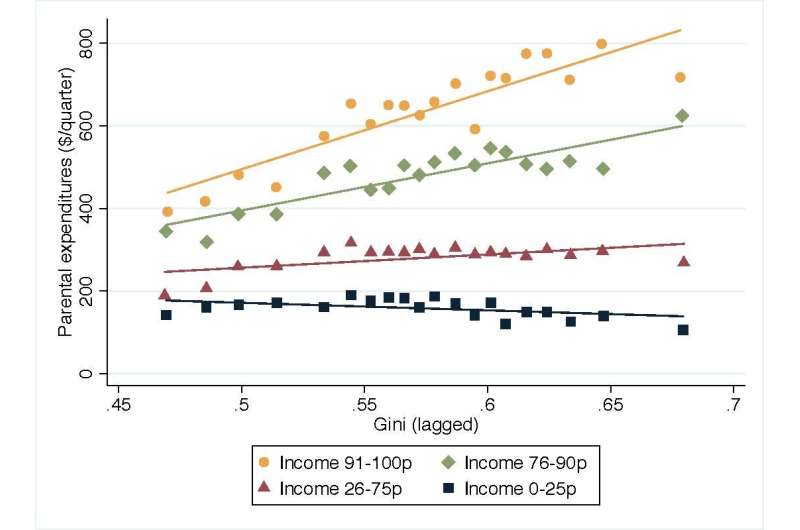Gap between what the rich and poor spend on their kids is widening

It may seem like common sense that rich parents spend more money on their children than poor parents do. A new study co-authored by a CSU faculty member shows that this financial gap is widening due to rising income inequality.
Orestes Pat Hastings, a CSU assistant professor of sociology, says his team's research demonstrates that as income inequality grows, richer parents feel compelled to spend more money on lessons, high-quality child care and education for their children to make sure they can get ahead – or at least avoid falling behind.
"It becomes like an arms race where middle- and upper-class families are trying to give their children every advantage they can, while the poor lack the resources to compete," Hastings says. "And the inequality among parents is transferred to children, creating a wider gap for the next generation."
On the bright side, the study showed that rising income inequality was not significantly affecting the amount of time parents at various income levels spend with their kids.
The study, "Income Inequality and Class Divides in Parental Investments," was published May 21 in the American Sociological Review, the peer-reviewed flagship journal of the American Sociological Association.
Hastings and his co-authors reached their conclusions by analyzing more than three decades of data from the Consumer Expenditure Survey and the American Heritage Time Use Survey, and linking that to measures of state-level income inequality based on federal tax returns.
The researchers did not find that income inequality was increasing class gaps in the amount of time parents spend with their children, but they did find that upper-class parents in states where income inequality grew the most spent more on their children than parents in states where income inequality increased less. For example, in the states with the highest levels of income inequality, families in the top 10 percent spent over three times more than those in the bottom 75 percent. That's not because lower-income families spend less, but because the rich spend much more.
The researchers measured financial investments in the areas of child care, lessons and education. Those included things like books and after-school sports or music activities, but not clothes or furniture, for instance.
Decreased upward mobility
Hastings says the widening financial gap in parental investments is a concern for the continuing viability of the American Dream. The study's results suggest that it's becoming increasingly difficult for children from low-income families to experience upward economic mobility.
When the researchers explored why rising income inequality was driving higher-income parents to spend increasing amounts on their children, they concluded that about half of the increase was due to rising incomes – the rich just having more to spend – but that wasn't the whole story.
"Affluent parents might see rising income inequality as really making a winner-take-all economy and feel a strong push to give their kids every advantage they can," said lead author Daniel Schneider of the Department of Sociology at the University of California-Berkeley.
The researchers used regression models that controlled for various other factors that might have affected their findings, including parents' age, race, education level and number of hours at work each week.
More programs for children
"It's nothing new to know that richer parents spend more on their children, but now we can see these gaps are widening, and have some idea as to why," Hastings said of the study' results. "This has potential to undermine the aspirations and economic opportunities for increasing proportions of younger generations. If we're concerned about this, we may want to see more programs and public resources that benefit children, especially those from low-income families."
Hastings, who joined CSU last year, started work on the project while a graduate student at UC-Berkeley. He pursued his Ph.D. in sociology after earning undergraduate degrees in physics and math.
For his next project, Hastings has received a $50,000 grant from the Peter G. Peterson Foundation to research how family structure – a single-parent, two-parent or multi-generational household – is linked to these financial investments in children.
More information: Daniel Schneider et al. Income Inequality and Class Divides in Parental Investments, American Sociological Review (2018). DOI: 10.1177/0003122418772034
Journal information: American Sociological Review
Provided by Colorado State University


















